
Texas waters are home to more than just fish and gators—some of the state’s most dangerous snakes also slither beneath the surface. Whether you’re swimming, fishing, or hiking near rivers and lakes, it’s worth knowing which serpents could pose a threat. From venomous bites to aggressive behavior, these are the eight water snakes in Texas you definitely don’t want to surprise.
Texas Is Full of Snakes—But These Are the Ones to Watch
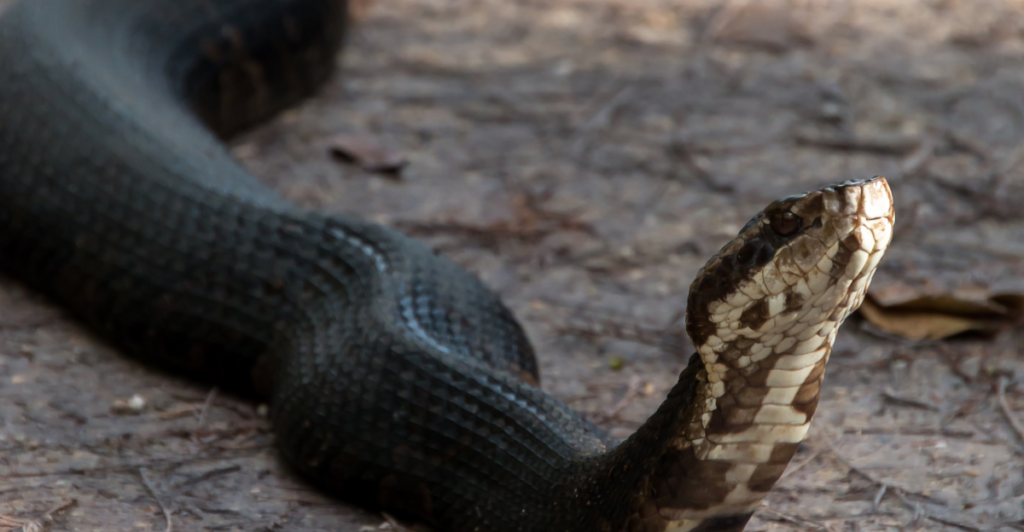
With 96 species and subspecies of snakes, Texas boasts some of the greatest herpetological diversity in the U.S.—and 14 of those are venomous. While most snakes avoid confrontation, water snakes are often encountered unexpectedly by swimmers, anglers, or hikers exploring creeks and wetlands.
Their habitats overlap with human activity, making encounters more likely—and potentially more dangerous. Though many water snakes are non-venomous, several venomous types, like the cottonmouth and coral snake, can cause serious medical emergencies.
Even harmless water snakes often display aggressive behaviors when threatened, leading to confusion and panic. Understanding which species are most dangerous and how to identify them helps reduce unnecessary harm—to both humans and snakes.
1. Salt Marsh Snake

The salt marsh snake (Nerodia clarkii) is a non-venomous species that thrives in Texas’ coastal marshlands and brackish tidal flats. Unlike most freshwater snakes, this one is uniquely adapted to survive in salty environments—an evolutionary edge that allows it to exploit habitats few others can.
Salt marsh snakes are nocturnal and spend much of their time hiding among grasses and debris, making them hard to spot. Their behavior is typically docile, but when threatened, they may thrash and bite.
While not dangerous to humans, their resemblance to other water snakes can cause panic among beachgoers or fishermen. Rising sea levels and coastal development pose serious threats to this species, which serves as an indicator of wetland health.
2. Cottonmouth
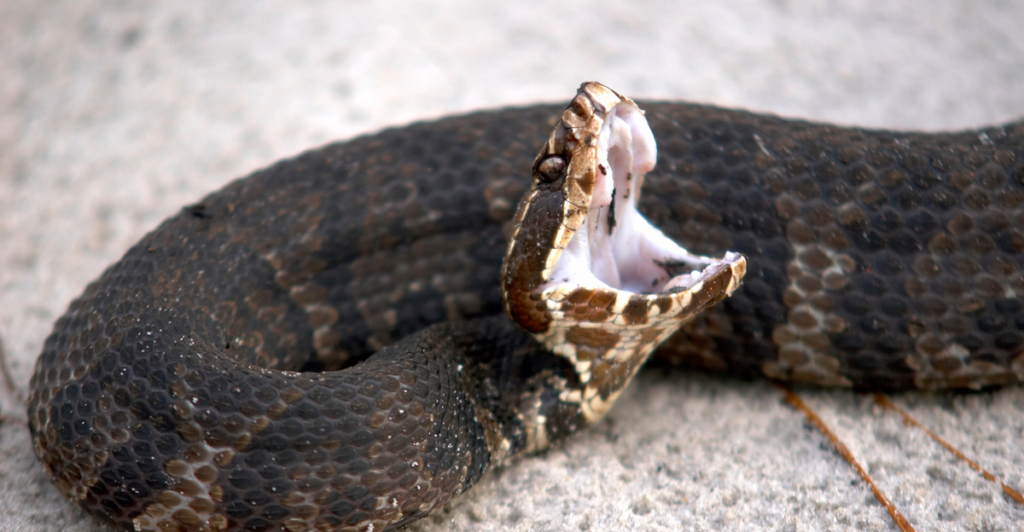
The cottonmouth, also called the water moccasin (Agkistrodon piscivorus), is perhaps the most feared water snake in Texas—and for good reason. This semi-aquatic pit viper is found in swamps, slow rivers, and marshes across much of East and Central Texas.
What makes it particularly intimidating is its bold defensive display: when threatened, it coils, hisses, and opens its mouth wide to reveal a stark white interior, earning its nickname. Unlike many snakes that prefer to flee, cottonmouths may stand their ground or even advance toward a perceived threat.
Their venom is hemotoxic, causing extreme swelling, tissue destruction, and, in rare cases, death. Even more unnerving, they often float visibly on the water’s surface, not submerged like many non-venomous species, increasing the chance of human encounters.
3. Coral Snake

With its bright red, yellow, and black bands, the Texas coral snake (Micrurus tener) is both beautiful and dangerous. Although not typically associated with aquatic environments, this elusive snake is sometimes found near streams, floodplains, and wooded riverbanks, especially in the eastern parts of the state.
Its venom is neurotoxic and works very differently from the tissue-destroying venom of vipers—it targets the nervous system and can cause respiratory failure if left untreated. Fortunately, bites are rare because the coral snake is secretive and less likely to strike unless handled.
However, its method of venom delivery is unique: it needs to chew briefly to inject venom, which makes accidental contact near water sources particularly risky.
4. Copperhead
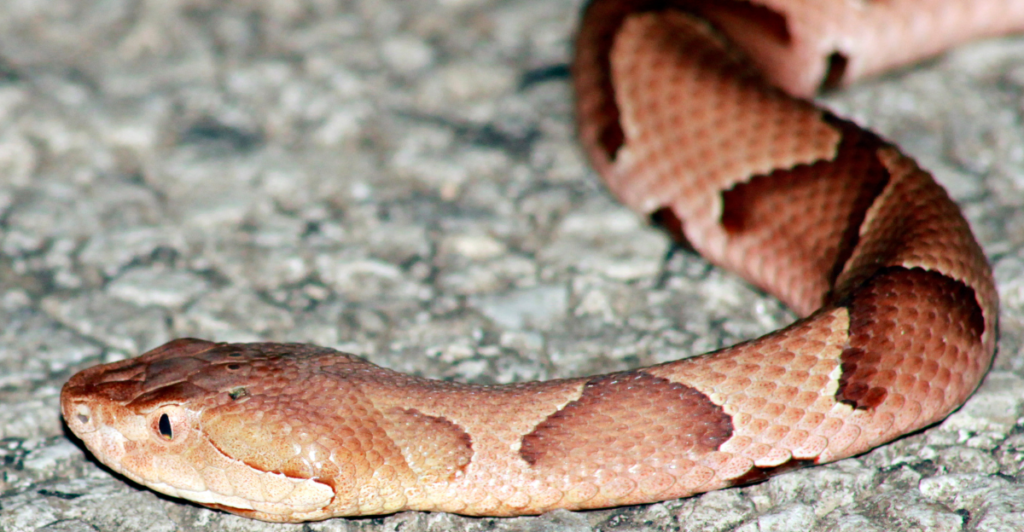
Often lurking unseen in leaf litter and dense vegetation, the copperhead (Agkistrodon contortrix) is a master of camouflage. Two subspecies—the eastern copperhead and the broad-banded copperhead—are commonly found in Texas, especially in riparian areas, floodplains, and wet forests.
Though not inherently aggressive, copperheads are responsible for more venomous snakebites in the U.S. than any other species, largely due to accidental encounters. They freeze when approached, which increases the chance of someone stepping on them unknowingly.
Their venom is hemotoxic but typically less potent than that of the cottonmouth; still, bites can cause severe pain, swelling, and tissue damage. In some cases, secondary infections or allergic reactions can complicate recovery. Their presence near hiking trails, campsites, and fishing spots in Texas makes them a hidden hazard.
5. Diamondback Water Snake
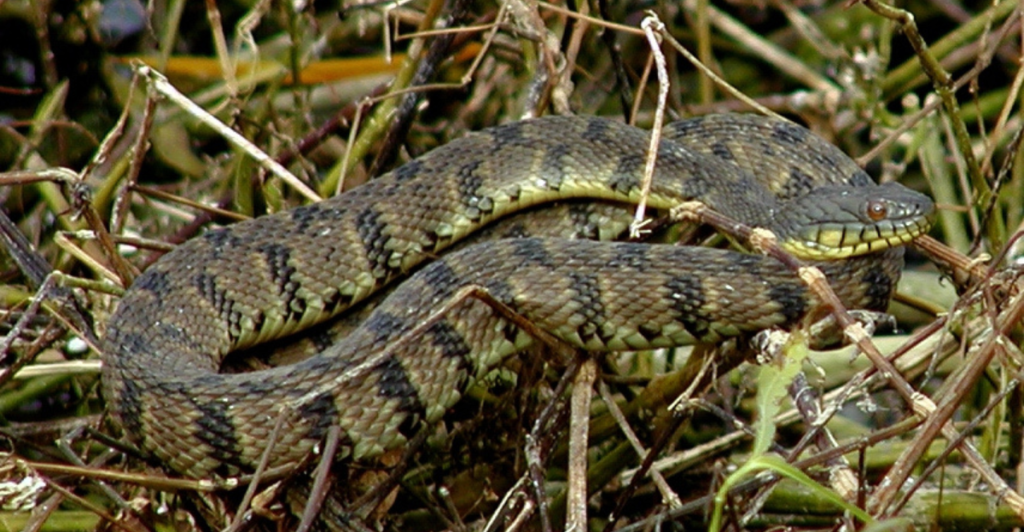
The diamondback water snake (Nerodia rhombifer) is one of the most common and misunderstood non-venomous snakes in Texas. Found along creeks, ditches, lakes, and slow rivers, this bulky serpent often grows over five feet long and has a pattern that mimics the infamous cottonmouth.
As a result, it’s frequently killed on sight by frightened passersby, despite playing a vital ecological role. Diamondbacks are known for their defensive behavior—they’ll hiss loudly, flatten their heads, and strike repeatedly if cornered, mimicking venomous snakes.
Though its bite isn’t venomous, it can be painful and shocking due to the snake’s size and aggressive display. These snakes are vital predators of fish and amphibians and help balance aquatic ecosystems. Misidentifying them not only leads to needless killings but increases human fear unnecessarily.
6. Mississippi Green Water Snake
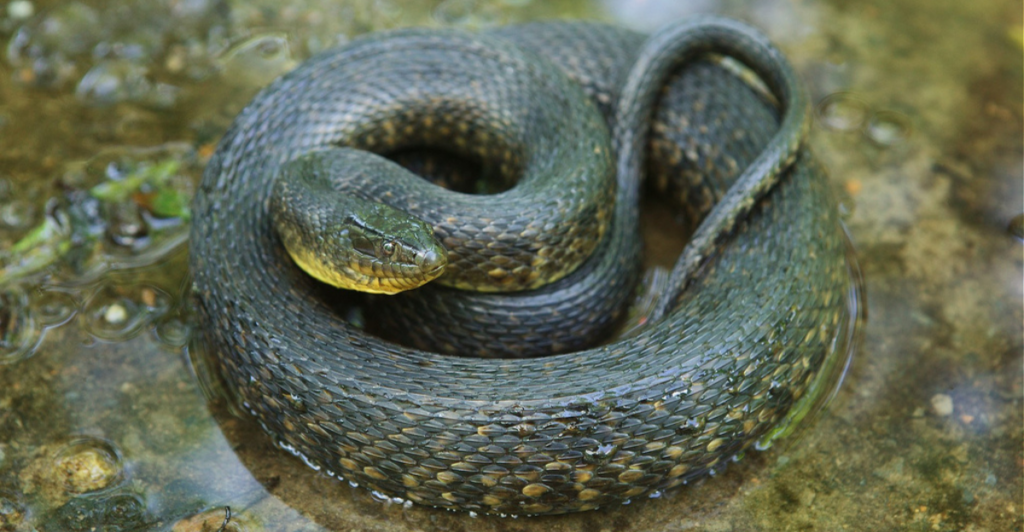
The Mississippi green water snake (Nerodia cyclopion) is a lesser-known species that haunts the swampy waters of East Texas. Its olive-green coloration and robust build can startle those who encounter it, especially since it’s easily mistaken for more dangerous snakes like the cottonmouth.
Though entirely non-venomous, its powerful bite and fierce temperament when cornered have earned it a fearsome reputation. This species prefers quiet, slow-moving water and tends to stay hidden in dense vegetation during the day. It’s an ambush predator, feeding primarily on fish and amphibians.
While not frequently encountered, its presence often goes unreported due to its secretive nature. Because it’s so rarely seen, encounters can be startling and memorable—leading many to assume it’s something far more dangerous.
7. Brazos Water Snake
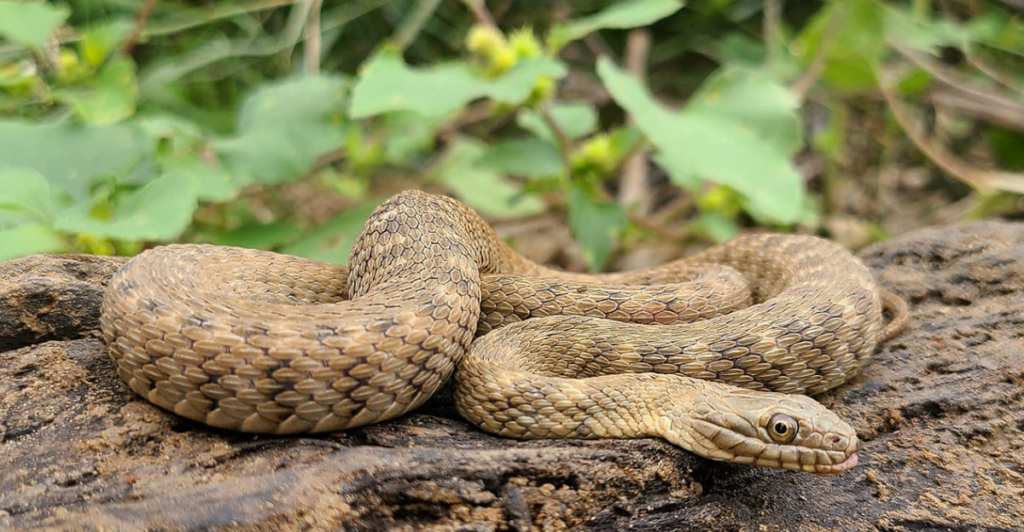
Endemic to Texas, the Brazos water snake (Nerodia harteri) is a narrow-ranging, non-venomous species that’s only found along the upper Brazos River and its tributaries. Unlike more widespread water snakes, the Brazos water snake is elusive and seldom seen.
While harmless, it can be mistaken for venomous species due to its defensive behavior and drab coloration. Its status as a threatened species has led to increased efforts to study and protect it, particularly as its habitat faces pressure from development, water pollution, and river modification.
Despite being non-aggressive and shy, it plays an important role in the local food chain, feeding on small fish and amphibians. The Brazos water snake’s rarity, unique habitat preference, and restricted range make it one of Texas’s most mysterious—and misunderstood—water serpents.
8. Concho Water Snake

The Concho water snake (Nerodia paucimaculata) was once on the federal endangered species list, but decades of conservation work led to its removal in 2011. Native to the Concho and Colorado River systems in Central Texas, this non-venomous snake was threatened by habitat loss due to damming and water diversion.
Unlike other water snakes, the Concho variety is highly dependent on specific environmental conditions—clean, flowing streams with rocky substrates. Though harmless, it is often mistaken for more dangerous species, leading to unnecessary killings.
Today, thanks to careful monitoring and habitat restoration, populations are stable in key areas. Its recovery offers a hopeful reminder of how targeted conservation efforts can bring even the most vulnerable species back from the brink.
How to Stay Safe (and Smart) Around Texas Water Snakes

Understanding which water snakes pose a real threat—and which don’t—is key to staying safe while exploring Texas’ lakes, rivers, and wetlands. Venomous species like the cottonmouth and coral snake require caution, but non-venomous lookalikes such as the diamondback and broad-banded water snakes are often wrongly feared and killed.
Misidentification is not only common, it’s harmful—both to humans who may panic or overreact, and to snakes that play essential roles in local ecosystems. A few simple cues can help: venomous snakes like cottonmouths float on the water’s surface, while most non-venomous snakes swim with their bodies submerged.
Learning patterns, behavior, and proper response techniques—like backing away slowly and not provoking the snake—can prevent dangerous situations.
Explore more of our trending stories and hit Follow to keep them coming to your feed!

Don’t miss out on more stories like this! Hit the Follow button at the top of this article to stay updated with the latest news. Share your thoughts in the comments—we’d love to hear from you!







